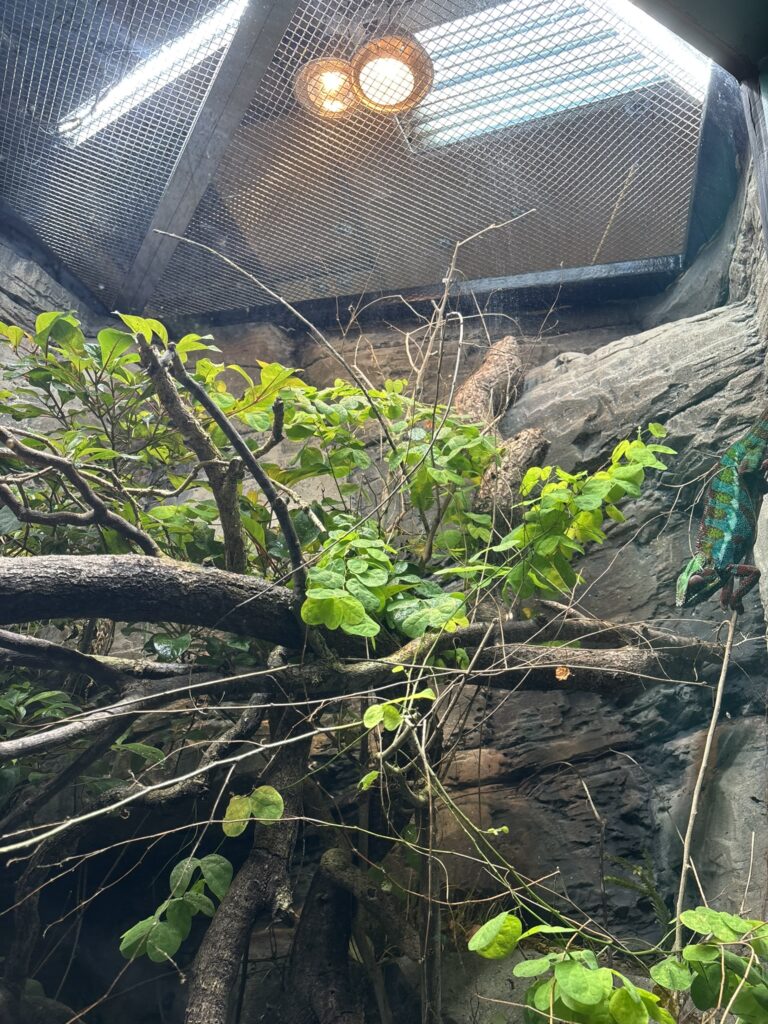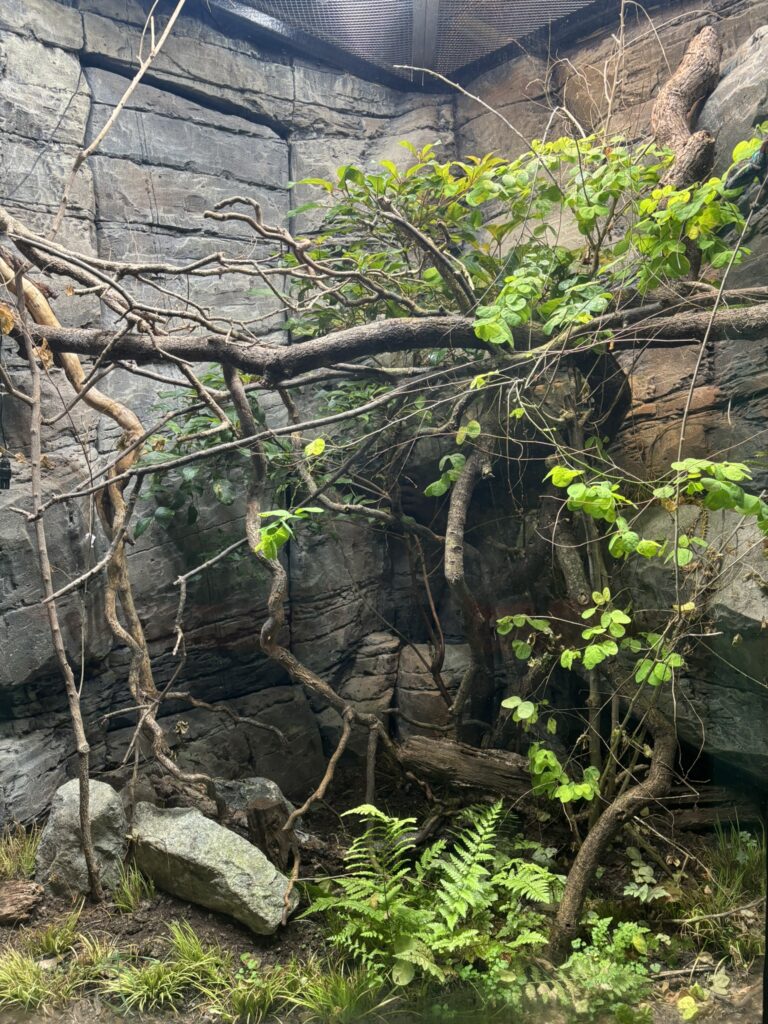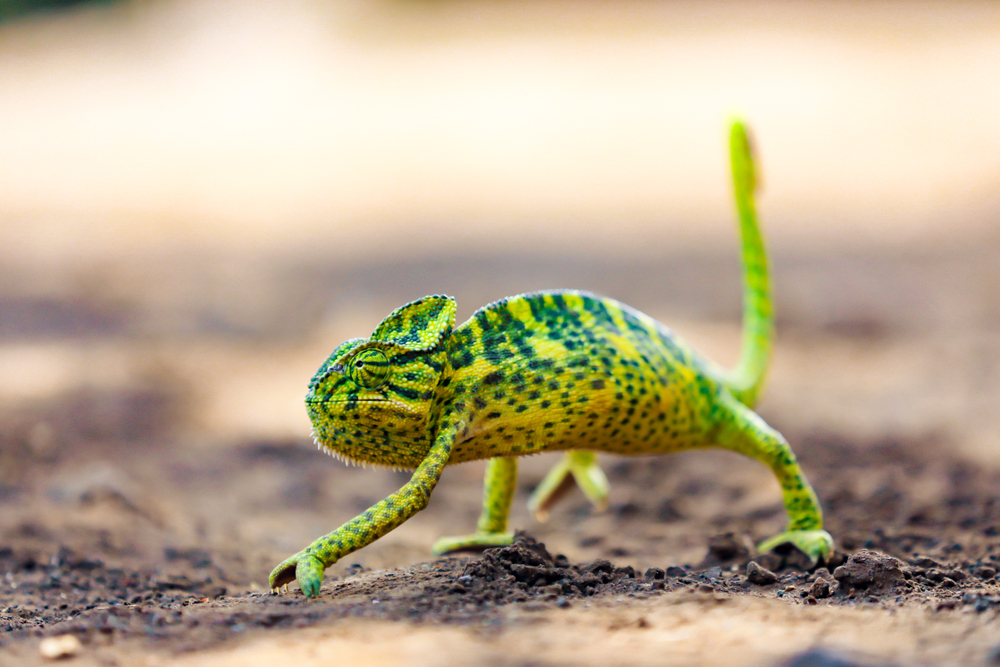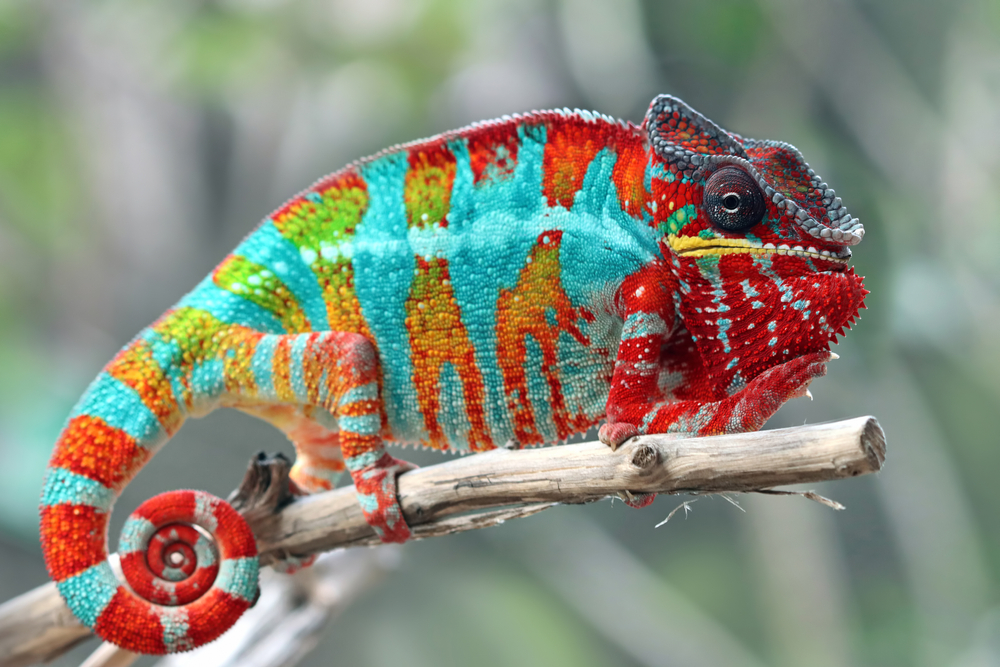Chameleons can be some of the most difficult reptiles to keep correctly. Yet, they are some of the most popular and often marketed as a beginner pet. Many people are very succesful at keeping these marvellous reptiles, but this is often because they know some basic principles about their care. Here are our top tips to ensure your chameleon is cared for correctly:
Chameleon Perches and Branch Thickness
Most chameleon species prefer surprisingly thin perches in the wild. This certainly applies to the most popular species in captivity. Although their zygodactyl feet may be capable of grasping thick branches, wild chameleons are usually found resting on robust yet very thin branches. It is important to offer a range of branches less than 1 inch thick in diameter for the chameleon to grasp onto. Using plants with robust stems and branches, as well as artificial perches is best to achieve this.
Unfortunately, when a species is common in captivity or as photogenic as a chameleon, finding real in situ images of the species in the wild becomes a task. Instead of following the status quo of terrarium décor, reach out to scientists, reference academic papers and utilise iNaturalist to make educated decisions on habitat décor. Neither yemen nor panther chameleons occupy the “jungle” instead they live on forest edges and scrubland and therefore an elaborate tropical enclosure is far less important than correct branch thickness and well-positioned foliage.


Humidity and Water for Chameleons
Chameleons receive most of their water through the food they eat. In fact, wild Yemen chameleons almost never drink (or there are certainly very few observations of this behaviour). They are also very often subject to entire months where not a single raindrop falls from the sky. They can survive these periods by the spikes in humidity caused by fog in their wild habitats. Captive chameleons will often drink and some experts believe this is because they are simply being denied adequate hydration at night. Whilst the daytime conditions in Madagascar, Yemen or Central Africa may be harsh, night-time fogs creates the perfect conditions to prevent water desiccation at night. This safety net (and basic environmental factor) should be implemented in captivity.

Understanding Chameleon Body Language
Contrary to popular belief, the chameleon’s primary reason for drastic colour changes is to reflect mood, not to camouflage with its environment. When a chameleon is agitated it may display the inside of its mouth or darken drastically in colour. If a male chameleon encounters a female, it may become more vibrant. Such behaviours are marvellous to observe.
When a chameleon is stressed it will darken. While this can be interesting to watch, it is undeniably a stress response and should not be encouraged. Chameleons are “hands off” pets. They are delicate and sensitive and any attempt to “make” a chameleon change its colour is irresponsible.
Some chameleons can become reasonably tame, but it is important to play close attention to their stress response if handling is absolutely necessary. This is even more important for juvenile animals as young chameleons can become so overwhelmed that they become brown and feign death. This is a last-ditch attempt to avoid predation when the chameleon feels that its life is endangered.



Chameleon Diets
Most chameleons (certainly the popular species) eat a strictly insectivorous diet consisting mostly of flying insects. They occupy bushes and shrubs, only very rarely leaving their chosen plants, so the food must come to them. Whilst hand-feeding dubia roaches and locusts can be a rewarding and exciting way of engaging with the animal, it is important that a range of insects are released into the enclosure.
Many chameleon keepers will breed their own butterflies or bees, but black soldier flies, silk moths and flying locusts can also be added. Of course, more staple insects such as crickets and roaches can also be included. If this is the case, they should be dusted with bee pollen to mimic the essential vitamins and minerals carried by pollinating insects in the wild. This (alongside a standard calcium and multivitamin supplement for usual feeding) will provide a more naturalistic diet.

Ventilation and Enclsoure Choice
Most people use mesh enclosures for their chameleons and with good reason. Not only do yemen chameleons require reasonably cool temperatures (sometimes cooler than typical “room” temperature) and panther chameleons can happily tolerate temperature drops, but aeration is extremely important to chameleons. Unfortunately, this can come at the expense of important night time humidity spikes which is why many people use “hybrid” enclosures. Either way, the wooden vivarium enclosures that are usually used by pet shops should only ever be considered temporary housing. A fully enclosed enclosure (glass or wood) will not provide the appropriate amount of ventilation for the chameleon. Moisture buildup can lead to a whole host of health problems including respiratory and fungal issues. Humidity should also spike to 100% at night but drop below 50% during the day. This may be difficult to replicate in any enclosure, but a hybrid terrarium stands the best chance.
